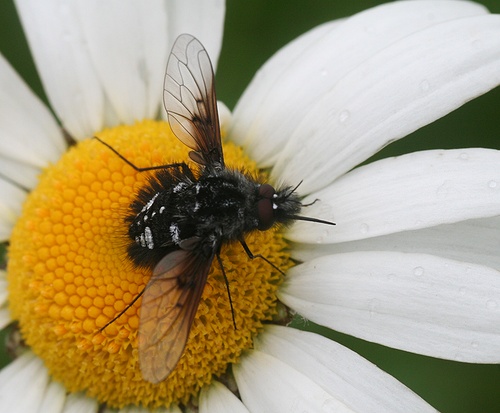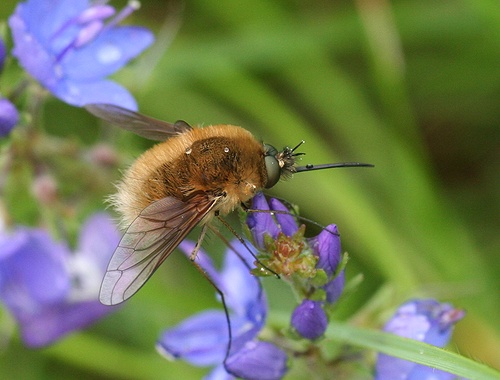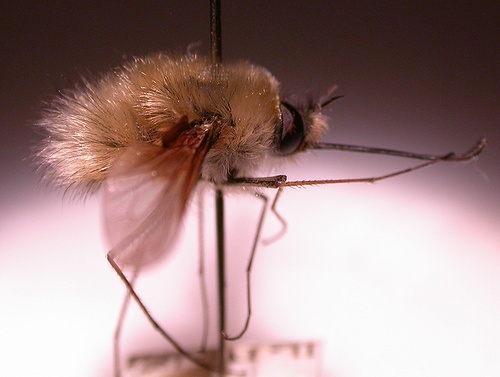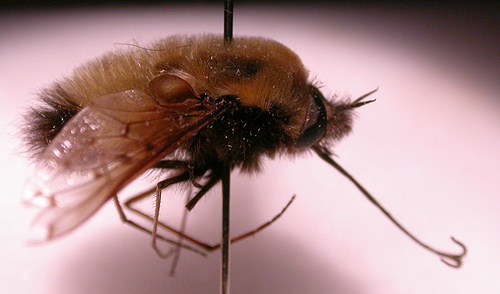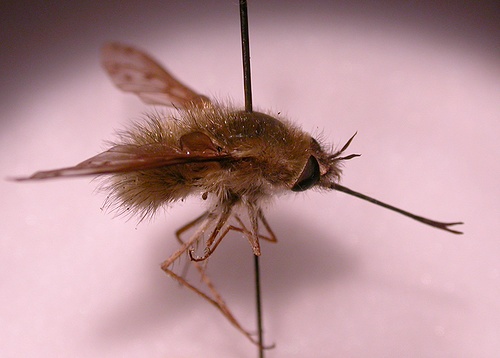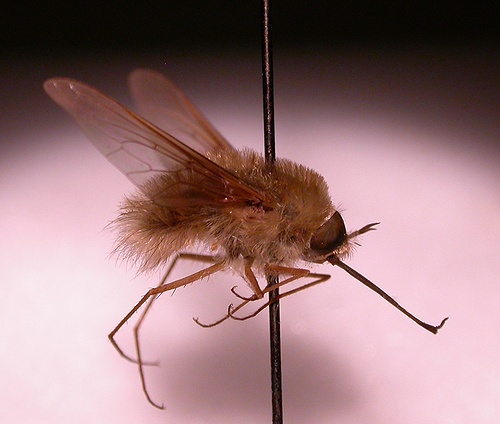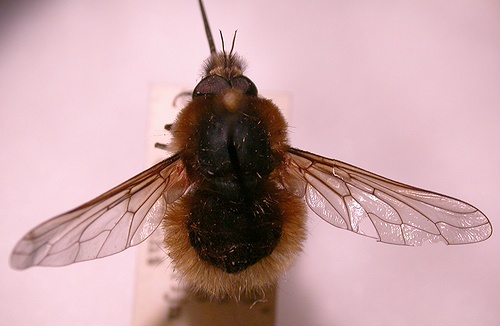1.b Wing: without dark patches all over the wing, hyaline, with diffusely darkened front border or with a sharply defined dark front border -> 3
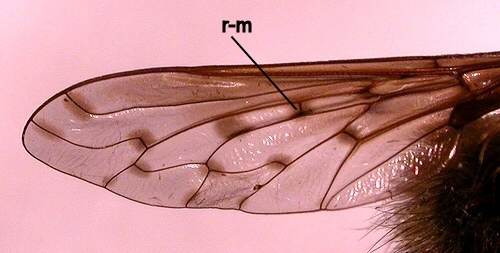
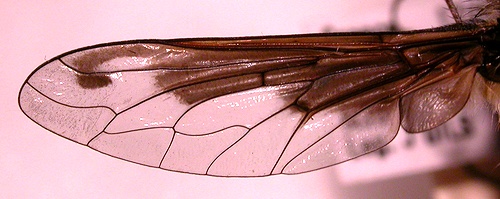
Wing with dark patches all over, above/left; wing without dark patches, but with dark front border, below/right.
2.a Body ventrally black haired. 10-16mm. -> Bombylius discolor Mikan, 1796
2.b Body ventrally yellowish haired. 9-12.5mm. -> Bombylius medius Linnaeus, 1758
3.a Wing with a sharply defined dark front border -> 4
3.b Wing hyaline or with a diffusely marked front border -> 5


wing with sharply defined dark front border, left-above; wing with diffusely marked front border, right, below.
4.a Wing: the black patch fills the front cell R1 completely. 9-11.5mm. -> Bombylius major Linnaeus, 1758
4.b Wing: the black patch does not fill the front cell R1 completely, but leaves hyaline parts, sometimes isolating a black spot in the wing tip. 8-11mm. -> Bombylius fimbriatus Meigen (1820)


Wing B. major, left, above; wing B. fimbriatus, right, below.
5.a Body black haired; abdomen with silverish hair patches (take care with dead, disrupted material which may lose all of the hair patches). 6-11 mm. -> Bombylius ater Scopoli, 1763
5.b. Body yellowish haired; abdomen without silverish hair patches -> 6
6.a Head seen in front: along the hind border of the eye a row of black hairs on the head, contrasting with the yellow hairs -> 7
6.b Head seen in front: without black hairs along the hind border of the eye, only yellow hairs present -> 8
7.a Thoracic dorsum, just before the implant of each wing, with 2-3 black bristles (look at this part from behind, from an acute angle to the body), these bristles remain in animals that loose their body hairs. Head of the halter dark. 8-11mm. -> Bombylius venosus Mikan 1796
7.b Thoracic dorsum, just before the implant of each wing, with 2-3 yellow bristles (may be hard to see amongst the yellow hairs); head of the halter whitish. 7.5-11mm. -> Bombylius canescens Mikan, 1796
8.a Thoracic dorsum, just before the implant of each wing, with 2-3 black bristles among the yellow hairs. Haed of the halter dark. 7.5-10 mm. -> Bombylius cinerascens Mikan 1796
8.b Thoracic dorsum, just before teh implant of each wing, with 2-3 yellow bristles, which may be hard to detect amongst the yellow hairs. Head of the halter pale -> 9
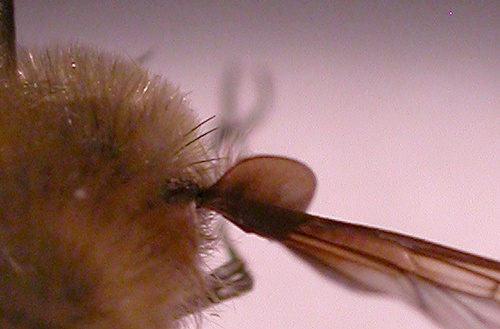
B. cinerascens, black bristles just before implant of wing.
9.a Femora black beneath the silverish scales. 7-12mm. -> Bombylius vulpinus Wiedemann, 1820
9.b Femora yellowish to reddish beneath the silverish scales. 7-11 mm. -> Bombylius minor Linnaeus, 1758
